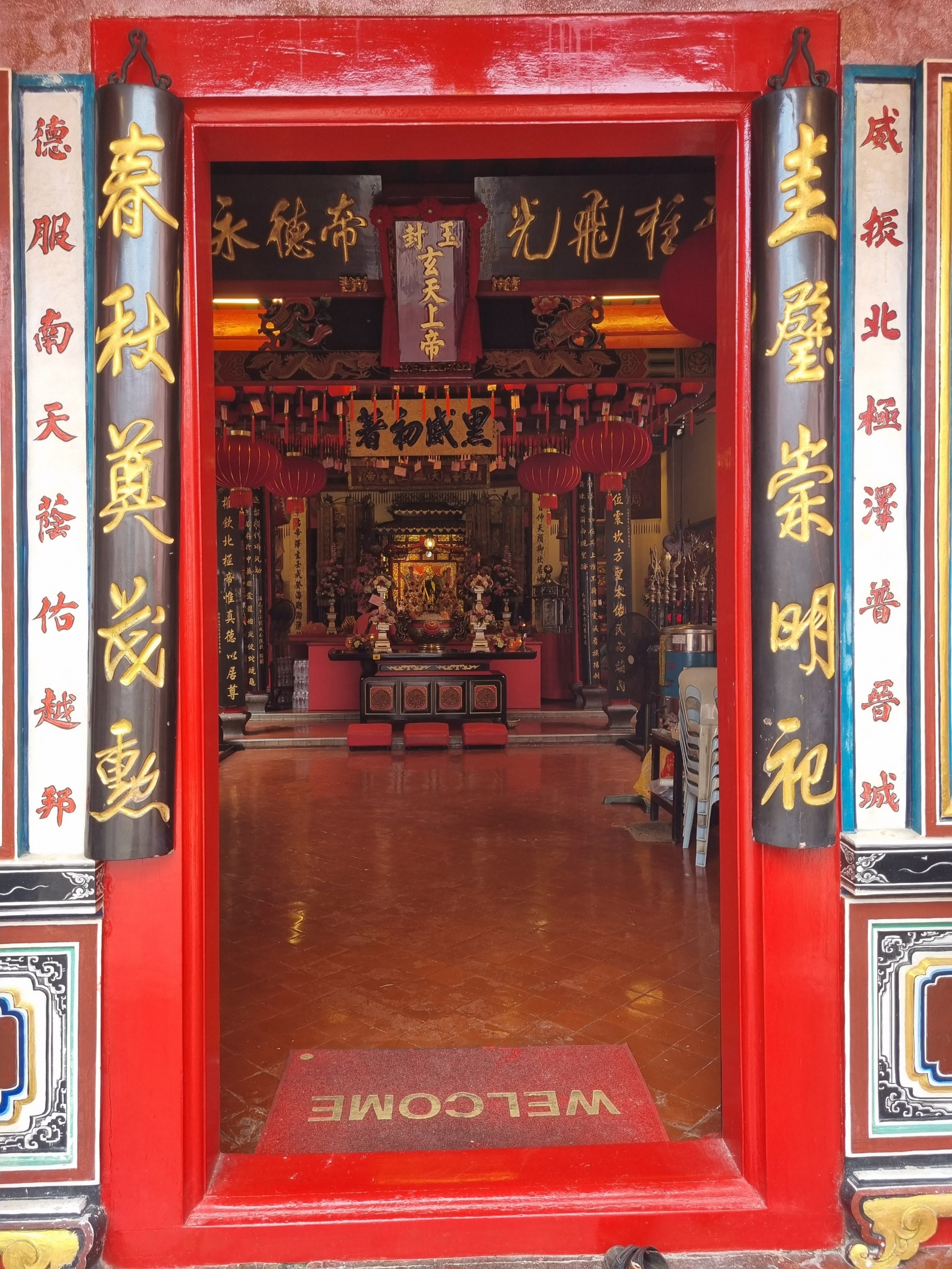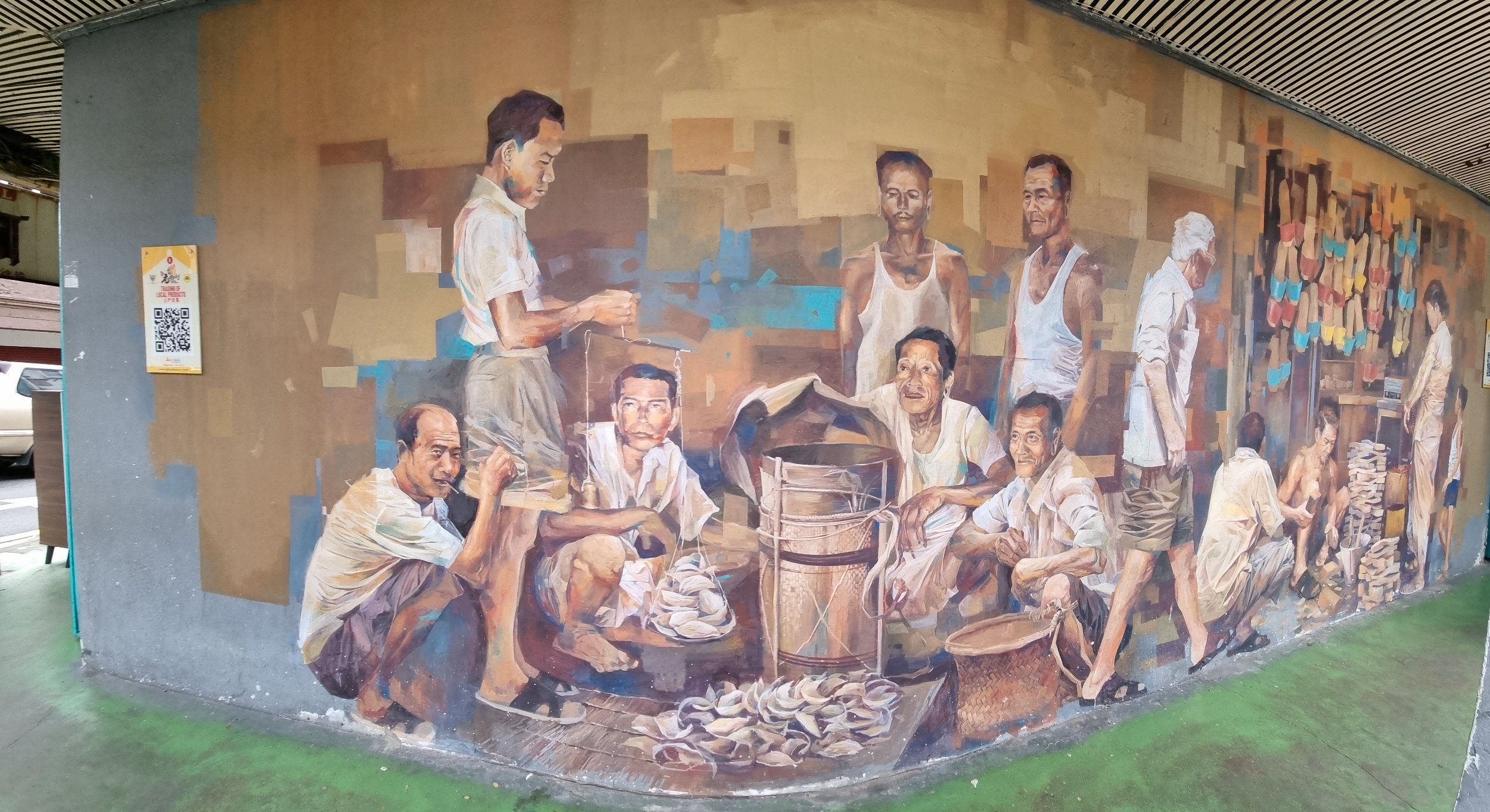I have not visited Kuching in at least 11 years. It is the birthplace of my husband and in Sarawak, East Malaysia. After the incredible urban cityscape of Singapore, Kuching appears a little quaint, but it still preserves the small-town charm of Malaysia, while having the more modern conveniences of wifi, contactless payments and superb air conditioning.
My in laws were so excited to reacquaint us with the local sights that I could clearly see that a lot of planning had gone into the organisation of our whirlwind stay. For lunch today, we came to the famous “Lao Eah Keng” which essentially directly translates to “Old Decrepit Place”, but in actual fact, is an abandoned Chinese temple, refurbished into a hawker space with the best kolo noodles and dumplings in town. It’s smack in the middle of the tourist strip, in the heart of Kuching city and is well known to the locals as well as foreigners alike. My in laws tell me it’s not uncommon for visitors from neighbouring ASEAN countries to order 70 packs of those delectable noodles, pack them in a freezer bag, and fly them back to their home countries.
View from Jalan Carpenter- looking towards the State Legislative building.
Old temple converted to hawker stall
And eat, we did.
The beautiful little temple across the road on Jalan Carpenter. Obviously a popular temple. As I snapped this pic, there were plenty of people genuflecting to the resident deities.
I love that they are so used to tourists here that they don’t object to tourists taking photos.
My sister in law spotted this beautiful mural done by a local artist, depicting a traditional wooden clog shop. These clogs were once upon a time, incredibly common. You hardly see anyone wearing them anymore.
I love these old shophouses. I think they look incredibly elegant. I’ve never been to the upper levels of one in my life, and have often wondered what it would be like to live in one of these. I imagine it would be pretty dark and possibly quite airless inside, as these buildings are in a long terrace row and extend quite a long way inside. But one could run one’s own entrepreneurial business downstairs, and live upstairs. It would be handy to be able to look out onto a bustling street, and to keep an eye on local foot traffic. These particular buildings are very old and have survived for over 200 years.
Side gate of temple
One thing I have to acknowledge about Malaysia is that you would have a great deal of difficulty here if you were physically disabled, as the place is simply not easily accessible without the blessed ability to walk freely. The walkways under shophouses are incredibly narrow, famously known throughout Malaysia and SIngapore as “5-foot walkways”, and with unpredictable threshold stairs and uneven path textures., As you can see in the picture, some shopfronts have tiles, some have cobblestones, some have plain old concrete. Wheelchairs, walkers, prams…….forget it.
But you cannot beat the historical charm of Malaysia. More to follow in the next post.









